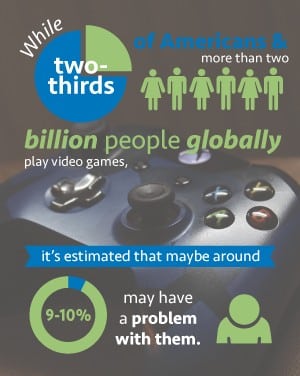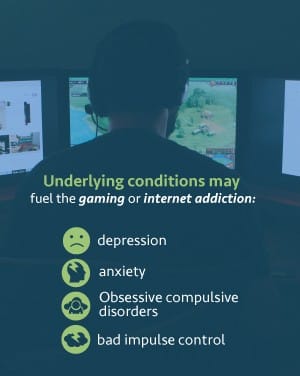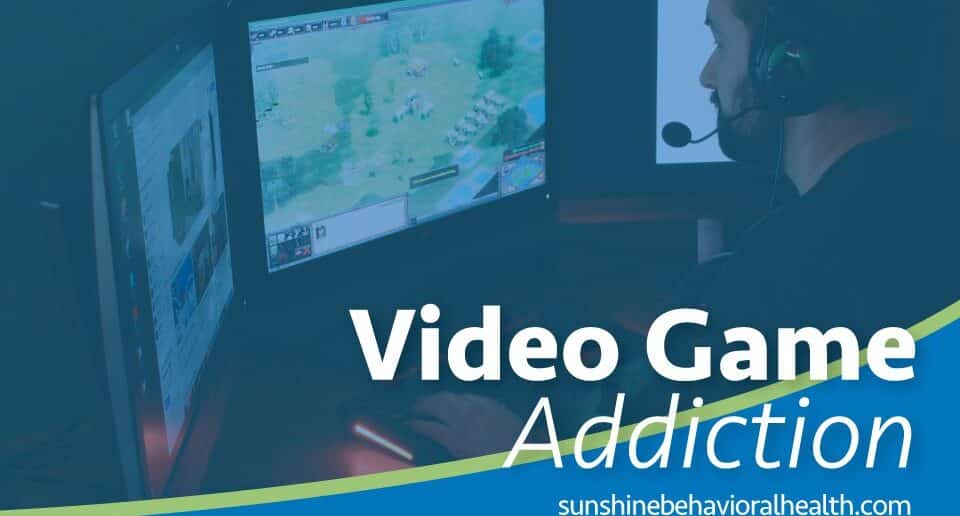It’s been game on for people during the COVID-19 lockdown.
Some folks are giving video games a go for the first time since shelter-in-place orders started being issued. For others, it’s more of the same. Much, much more. (Verizon Communications alone has seen gaming activity rise 75% in early 2020.)
People aren’t necessarily buying more games, but they are spending more time gaming.
More than half of the people surveyed by Nielsen in the United States, Germany, France, and the United Kingdom said they were playing more after the pandemic hit. The week of March 29, 2020, people around the globe downloaded 1.2 billion games — 50% more than average, according to a Bloomberg News report.
Video games have long been a popular way to while away a few hours. Pong, released in 1972, generally is referenced as the OG of plug-in pastimes, but there were earlier games.
They include the 1940s computerized version of Nim (that used lights and lacked the video aspect, but the seeds were there) or Tennis for Two, where players batted a “ball” across a court. The latter enchanted spectators at Brookhaven National Laboratory’s science fair in 1958. Hundreds lined up, eager to give it a go. It was later disbanded, and the parts scrapped, but the memory lives on.
 Fast-forward to today, where we’re in the eighth generation of consoles, with millions of sales, more than a billion players globally, and somewhere in the neighborhood of 800,000 games having been released since the early 1980s (when the first Nintendo Entertainment System was launched in Japan, and landed on U.S. shores not long after).
Fast-forward to today, where we’re in the eighth generation of consoles, with millions of sales, more than a billion players globally, and somewhere in the neighborhood of 800,000 games having been released since the early 1980s (when the first Nintendo Entertainment System was launched in Japan, and landed on U.S. shores not long after).
Today there are gaming platforms galore — console optional — that let players build their own worlds, role play, fight crime or commit it, battle zombies, go to war, tend to things, and more.
Solitary folks can play solo, and social folks can team up on missions. The list goes on. And on.
While two-thirds of Americans and more than two billion people globally play video games, it’s estimated that maybe around 9% or 10% may have a problem with them.
Parents Protest
Video games have long been sources of controversy. Some highlights include (or lowlights, for nongamers):
- 1976: Death Race sparked protests because the goal of the game was to run over creatures known as gremlins, which looked vaguely humanoid.
- 1993: Mortal Kombat’s violence was criticized as being too realistic.
- 1998: Grand Theft Auto was released, and with its mix of crime and violence, quickly drew outrage.
- 1999: Following the Columbine massacre, some victims’ families filed a federal lawsuit against game developers and movie makers, alleging the violence in entertainment influenced the student gunmen.
- 2001: The U.S. Surgeon General found no real link between video games and violent behavior. (The debate whether they do or don’t provoke violence lingers.)
When Is It a Problem?
A concern that’s sprung up in recent years is whether video games are addictive.
For 2017, Nielsen released data on how Americans ages 13 and older spent their leisure time. In an average week, Nielsen found that people spent 12% of their leisure time playing video games.
In 2018, the World Health Organization (WHO) officially acknowledged excessive gaming as a problem, including gaming disorder in its 11th revision of the International Classification of Diseases (ICD-11). It’s described as “a pattern of gaming behavior (‘digital-gaming’ or ‘video-gaming’) characterized by impaired control over gaming, increasing priority given to gaming over other activities to the extent that gaming takes precedence over other interests and daily activities, and continuation or escalation of gaming despite the occurrence of negative consequences.”
That doesn’t mean Junior’s considered a gaming addict if he spends a few hours every Saturday holed up with his Xbox or Nintendo Switch, however.
According to the WHO, a gaming disorder should only be diagnosed if the behavior:
- Heavily interferes with everyday functioning and commitments (family, social, school, occupational, etc.);
- If it makes changes to physical or psychological health (thumb, hand and wrist pain and swelling, for example); and
- It’s gone on for at least a year.
On the other hand, the American Psychiatric Association (APA) in 2013 described internet gaming disorder as a condition that needs more research before it can be considered a formal disorder. It’s of enough interest to merit a mention in its most recent Diagnostic and Statistical Manual of Mental Disorders (DSM-5), which serves as the bible of mental disorders, but more data is needed to make it official.
The APA mentions many of the same concerns the WHO has discussed, but also notes withdrawal symptoms such as agitation or anxiety when play ceases.
Such descriptions of gaming dependence closely mirror the official definition of drug and alcohol addiction: a chronic disorder distinguished by uncontrollable drug seeking and use that occurs despite negative consequences — be they tied to health, legal, social, school or work, or any combination thereof.
Because drug and alcohol addiction includes changes to the brain and how it responds to stress, self-control, and rewards, it’s considered a brain disorder, especially since the changes linger after substance use ends.
Video game addiction is the source of some debate, too, primarily because the pastime is a behavior, and not a substance one smokes, snorts, or ingests. One thing is certain, though: more research is needed.
Gaming: Pros and Cons
Despite the alarm, not all video gaming is bad. Some experiences can serve as learning tools. Others can serve as an escape or a glimpse to the past. During 2020’s long periods of shelter-in-place requirements, games are providing some people a welcome mental vacation or as a way to hang out with friends without being in their physical presence.
There are a few benefits to the hobby, too, including improving memory and focus, and developing some multitasking skills.
On the flip side, too much time at the console or with the handheld may lower educational and career progress, hurt social skills, and lead to peer problems.
Some experts contend that it is a real problem. The greatest scrutiny has been aimed at children, adolescents, and young adults, since brains are still developing into one’s twenties.
Glow Kids
One psychologist and addiction expert calls them “glow kids,” a reference to youngsters’ faces illuminated by the blue light of their digital screens.
Dr. Nicholas Kardaras, who has studied gaming dependence at Harvard Medical School’s Division of Addiction, contends the glow of the devices dulls their ability to cope and process things. It may not cause issues such as attention deficit hyperactivity disorder (ADHD), anxiety, substance use disorder, aggression, but Dr. Kardaras suspects there’s a link at least in a fair amount of cases.
He’s not alone in that mindset.
“Internet addiction in children and adolescents is a growing problem and part of our culture. The internet is a wonderful servant, but a cruel and crippling master,” according to David Rosenberg, M.D.
While serving as a professor and the chair of Wayne State University School of Medicine’s Department of Psychiatry and Behavioral Neurosciences, Rosenberg has overseen studies on youngsters and internet addiction, and discussed his findings, including with television newsmagazine 20/20.
“There is some debate in the field about whether internet addiction is real addiction or pathology. We contend it exists, and it can devastate children and their families. But there are differences – as well as similarities – with other addictive behavior, and you can’t just stop with a diagnosis of internet addiction, since there are always underlying conditions that must be aggressively diagnosed and treated for the long-term benefit of the internet addiction.”
Digital Detox

Wayne State’s researchers have performed brain scans and have conducted neuropsychiatric assessments while searching for executive function problems and brain abnormalities. Before subjects took a digital break, researchers noticed that gaming would overtake the brain’s reward centers and influence processing. Memory, attention, decision-making, and impulse control were affected, a lot of the same things that occur when people use drugs or alcohol.
Researchers also noticed changes in the brain when they scanned after a digital detox. This detox occurs when a person gives up their smartphone, tablet, and/or computers for a set amount of time. Evidence exists that a digital fast can normalize some brain abnormalities.
A quick break isn’t going to be a long-term fix, researchers warn. If old habits continue and no changes are made to the environment (limiting internet use, for example), the abnormalities will return.
Like many other researchers, the researchers caution that these brain changes aren’t happening in a vacuum. Underlying conditions such as depression, anxiety, obsessive compulsive disorders, bad impulse control, and other problems may fuel the gaming or internet addiction. Experts suggest cutting back on gaming or taking a break entirely (in the cases of where use has veered into addiction territory). Rosenberg suggests two hours a day, tops, on the internet for adolescents, and even less time for younger kids. If technology is becoming too much of a crutch (gaming or going online), some limits may help: In the most extreme cases where signs of video game (or internet) addiction is apparent — where it’s negatively affected day-to-day life for some time, and the user experiences withdrawal when they’re not online or in a game — cognitive behavioral therapy can help, as can support groups and counseling.
How to Slow Down or Stop
A better approach may be not to simply look at the gaming as a problem in itself, but to consider the bigger picture, specifically the reasons for playing as well as if there are any underlying psychological conditions.
Sources
Medical disclaimer:
Sunshine Behavioral Health strives to help people who are facing substance abuse, addiction, mental health disorders, or a combination of these conditions. It does this by providing compassionate care and evidence-based content that addresses health, treatment, and recovery.
Licensed medical professionals review material we publish on our site. The material is not a substitute for qualified medical diagnoses, treatment, or advice. It should not be used to replace the suggestions of your personal physician or other health care professionals.







